PAFFREL calls for Private Member Bill on LG bodies to be defeated
- .Says the bill is a death blow to the sovereignty of the people and democracy
- Claims bill does not specify for how long a Minister will be able to reactivate LG bodies
- Stresses governments could misuse the law to not hold elections when unfavourable
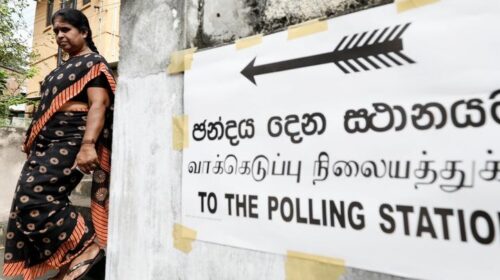 Independent election monitors, People’s Action for Free and Fair Elections (PAFFREL) yesterday called for the recently gazetted Private Member’s Bill presented by Sri Lanka Podujana Peramuna (SLPP) MP Jayantha Ketagoda to be defeated.
Independent election monitors, People’s Action for Free and Fair Elections (PAFFREL) yesterday called for the recently gazetted Private Member’s Bill presented by Sri Lanka Podujana Peramuna (SLPP) MP Jayantha Ketagoda to be defeated.
According to PAFFREL, the failure to hold elections as scheduled while attempting to reactivate Local Government bodies whose tenure has elapsed by amending existing legislation as proposed is a significant blow to both the sovereignty of the people and the principles of democracy. “This is yet another milestone in the attempts to obstruct elections and embark on a dictatorial journey,” the organisation said.
“The private member’s proposal states that if the poll cannot be held due to a crisis at a time when the local government bodies have been dissolved and the poll called, the existing law should be amended so that the minister can recall the dissolved local government bodies for a certain period of time. According to this section, the discretionary period is not specified and accordingly, the members of the dissolved local government bodies can be recalled even for a lengthy period at the discretion of the minister.” PAFFREL noted.
PAFFREL also noted that the bill has failed to elaborate on the term ‘crisis’ allowing the Government or the relevant Minister to misuse it. The organisation said they refuse to accept this as a mere Private Member Bill given the Government’s reluctance to hold polls.
PAFFREL said with this amendment in place, it raises uncertainty about whether any government will prioritise recalling elected representatives instead of conducting elections whenever they perceive it to be unfavourable
“If any representative of the people supports this proposal to become a law, it will be a great blow to the people’s sovereignty,” PAFFREL said while urging all MPs and the people to come together to defeat the effort. PAFFREL also said it will take all legal steps possible to prevent the bill from being enacted as law.
https://www.ft.lk/news/PAFFREL-calls-for-Private-Member-Bill-on-LG-bodies-to-be-defeated/56-750092
- Resolution for ouster of Public Utilities Commission Chairman receives 123 votes in favour and 77 votes against in Parliament
- Janaka Ratnayake says ouster not defeat but loss for people and MPs who voted for it
- Opines vote exposed MPs acting on baseless allegations to oust Chairman of independent commission who put people’s interest first and challenged unfair actions by Govt.
- President Wickremesinghe’s Government has increased electricity tariffs by 1200% in August last year and by 275% in February 2023
- Power and Energy Minister Kanchana Wijesekera charged politically motivated Ratnayake’s actions tantamount to sabotage as his refusal to approve upward revision in electricity tariff delayed early conclusion of IMF deal and caused Rs. 32 b loss to CEB
- Claims removal is to facilitate appointment of truly independent members to PUCSL
- SJB Leader Sajith Premadasa in Parliament exposes mockery of SLPP MPs for applauding Ratnayake’s appointment by Rajapaksa-regime
- Eran says removing PUCSL Chief via Parliament is a threat to democracy, good governance
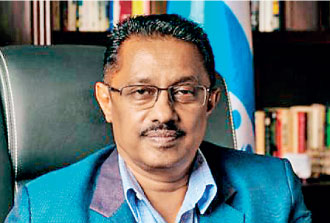 The Parliament yesterday unplugged the powerful Public Utilities Commission (PUCSL) Chairman Janaka Ratnayake who however declared it wasn’t a defeat but anticipated warning it was a loss for the people and MPs who voted for it.
The Parliament yesterday unplugged the powerful Public Utilities Commission (PUCSL) Chairman Janaka Ratnayake who however declared it wasn’t a defeat but anticipated warning it was a loss for the people and MPs who voted for it.
“The outcome wasn’t a surprise but anticipated except the split of the vote. I had cleared my office on Tuesday ahead of the vote,” Ratnayake told the Daily FT after 123 Government-aligned MPs voted for the motion for his ouster.
Several MPs in the opposition joined the Government to vote in favour of the resolution including A.H.M. Fowzie, Duminda Dissanayake, Anura Proyadarshana Yapa, Kumara Welgama, A.L.M. Athaullah, Vaidvel Suresh, John Seneviratne and Nimal Lansa.
The move was opposed by 77 MPs.
“The vote is a loss for the ordinary people and those MPs who wanted me out. The vote helped to expose the MPs who used baseless allegations to oust the Chairman of an independent commission. It is also unfortunate that the Parliament, considered as the body representing the people, took action against someone who put people’s interest first and challenged unfair actions by the Government when it came to electricity tariff,” Ratnayake added.
PUCSL Chief also claimed that the President Ranil Wickremesinghe-led Government was vindictive as Ratnayake got more air time in electronic media than President-himself, Ministers and celebrities given his crusade to ensure justice to the people with regard to electricity tariff. This was evident yesterday when several Government MPs described Ratnayake as “Mic Tyson” drawing the name of world famous boxer Mike Tyson.
However Power and Energy Minister Kanchana Wijesekera who opened the debate in support of the ouster of PUCSL Chairman charged that politically motivated Ratnayake’s actions tantamount to sabotage as his refusal to approve upward revision in electricity tariff delayed early conclusion of the critical agreement with the International Monetary Fund and caused a loss of Rs. 32 billion to CEB. Wijesekera vowed to pursue legal action to recover this loss from Ratnayake.
Wjesekara also said the first two allegations against Ratnayake were based on two judgements by the Court of Appeal. “The decision itself says the commission member has acted in a manner that violates the independence of the commission,” he said.
The Minister refuted allegations that the Government is attempting to dismantle independent commissions through the removal of Ratnayake. “Instead we are merely attempting to appoint truly independent commission members as required,” he claimed
Opposition Leader Sajith Premadasa during the debate in Parliament exposed the mockery that SLPP MPs had no issues when the then President Gotabaya Rajapaksa and Prime Minister Mahinda Rajapaksa-led Government in March 2021 appointed Ratnayake as the PUCSL Chairman. Premadasa said that whether Ratnayake has political ambitions or presidential aspirations are irrelevant at a time when he stood up against the Government’s injustice to the people by the exorbitantly increasing electricity tariff.
President Wickremesinghe Government has increased electricity tariffs by 1200% since August last year from Rs. 5 per unit to Rs. 66 and in February this year by a further 275%.
Last week PUCSL urged the Government that electricity tariff must be reduced by 27% given favourable developments in lower oil prices, appreciation of the Rupee and drop in demand as opposed to CEB’s proposal of 3% reduction. In an about-turn Minister Wijesekera yesterday informed Parliament that from 1 July tariff will be reduced by 23%.
SJB MP Eran Wickramaratne told Parliament yesterday that removing PUCSL Chief via Parliament is a threat to democracy, good governance. “Constitution assures him independence, so that he may fearlessly insist on basically pursuing his thoughts. So what the court said here was that an independent commission or commissioner can go to court to make sure that their orders and directives are carried out. So the PUSL Chairman has done the right thing. Intimidation and interference of independent commissions will cause fear in all commissions and commissioners and it’s a threat to democracy in this country,” Wickramaratne added.
“Countries world over are moving from democratisation and globalisation into good governance. This is evident in institutional changes. The principal – agent relationship created between policy makers and independent commissions. This is a new trend all over the world. It’s a rules based method where rules are clearly indicated and defined,” the SJB MP emphasised.
SJB MP S.M. Marikkar also in Parliament urged the Government to abolish all independent commissions due to their obvious allergy towards them.
“It is pointless to appoint sham commissions in the guise of establishing good governance in a bid to trick the public. Now we are wasting public funds to remove those appointed by the Government itself,” Marikkar said during the debate.
https://www.ft.lk/top-story/Parliament-unplugs-powerful-regular/26-748739
Restoring Ferry Service Will Rewrite History of India-Lanka Ties
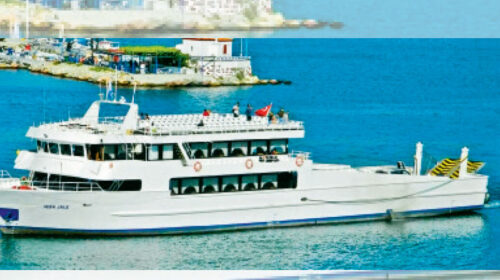 The ferry service between India and Sri Lanka, as well as railway connections, have all but vanished since the turn of the 19th and the 20th centuries, and the use of a comfortable Singaporean passenger vessel ‘IndSri‘ to sail between Karikkal (KKL)Port in South India and Kankesanthurai (KKS) Port in Sri Lanka’s Northern Province next month (Mid-May), will rewrite the history of sea connections between Indo-Sri Lanka.
The ferry service between India and Sri Lanka, as well as railway connections, have all but vanished since the turn of the 19th and the 20th centuries, and the use of a comfortable Singaporean passenger vessel ‘IndSri‘ to sail between Karikkal (KKL)Port in South India and Kankesanthurai (KKS) Port in Sri Lanka’s Northern Province next month (Mid-May), will rewrite the history of sea connections between Indo-Sri Lanka.
There was formerly a regular ferry service between India and Sri Lanka that served as an important mode of transportation for both people and cargo. However, with the collapse of the British Raj, severe cyclonic weather, and the civil war in Sri Lanka that began in 1983, the train and boat service was eventually rendered obsolete.
With the intervention of the Governments of India and Sri Lanka, IndSri Ferry Services will begin operations between KKS and Karaikkal (KKL) on 15 May, and the Indian Government has approved says operator Niranjan Nandagopan, MD, Indsri Ferry Services Pvt Ltd. He is a Singaporean who moved there from Jaffna in the early 1980s.
There are four other operators who have approached both governments. They are; Infinity Harbour Services, Mumbai, Drishti Cruise and Ferries Pvt Ltd, Goa, MOH Marine Transport Pvt Ltd, Chennai and KKL Terminal Operators Pvt Ltd, Bangalore. They are also waiting for approvals now.
The IndSri passenger ship will however, transport approximately 150 people between Kankesanthurai (KKS) and Karaikkal (KKL), with daily ferry services from Monday to Saturday departing at 8 a.m. from KKL and arriving at KKS at noon.
On the return journey, the ship will leave KKS at 2 p.m. and arrive at KKL at 6 p.m. with each passenger carrying 100 kg of free baggage allowance.
Ceylon is still the moniker given to Southern Indians, and in the 1970s it was the land of opportunity since the British assisted in the establishment of several tea plantations on the island, which just lacked the labour to run them. So, in the late nineteenth century, British authorities began examining the notion of joining the railway systems of the two colonies in order to facilitate the transportation of people and products between peninsular India and Ceylon.
History of the sea connection
Ajay Kamalakaran writes in 2021 the history of the railway and steamer connections between Indo-Sri Lanka in his article titled: “Boat Mail: Remembering the Train and steamer service from India to Ceylon”. He writes thus:
The first stage was to operate a train between Madras and Tuticorin. Passengers would then board the steamship bound for Colombo. This arduous journey, begun in the late 1800s, would take nearly two days, since the 709-km train ride lasted 21 hours and 50 minutes, while the ship linking the two ports would take somewhere between 21 and 24 hours.
To connect India and Ceylon, the British decided to construct a bridge over the Palk Strait in the 1870s. The plan was to connect peninsular India, Pamban (Rameshwaram) Island, Mannar Island, and the remainder of Ceylon with a series of bridges over the Adam’s Bridge or Rama Setu, establishing a continuous railway link between Colombo and India.
The longest bridge in this chain, according to a research report by Delphine Prema Dhanaseeli, would have been roughly 24 km long and would have connected Thalaimannar at the edge of Ceylon’s Mannar Island to Dhanushkodi at the tip of Pamban Island. The British Raj largely rejected the project but gave Rs 70 lakhs to build the Pamban Bridge, which would link Rameshwaram on the mainland with Mandapam.
The bridge’s construction began in 1902 and was planned by renowned American engineer William Scherzer, who is best known for developing the rolling lift bridge. For the bridge, which needed 2,000 tonnes of steel, manufactured materials were brought from England. The 65.23-metre-long rolling-type lift span, which can open up when vessels pass, was designed and built by Scherzer because engineers wanted to have a rail link without interrupting the ferry service, according to Dhanaseeli.
Natural disasters like cyclones and cholera epidemics played down construction. In 1913, the 2,065-metre-long bridge was completed. The bridge was opened on 24 February 1914. It was the first sea bridge in India and the longest until Mumbai’s Bandra-Worli Sea Link was erected in the 21st century.
The inauguration is believed to have been grand for the British Empire, with the foreign press invited to a ceremony presided over by John Sinclair, Governor of Madras, and Robert Chalmers, Governor of Ceylon, as well as Neville Priestley, MD, South Indian Railways. The railway and steamer service between the two countries, known as the Indo-Ceylon Express, was widely publicised on a global scale. It was known as the ‘Boat Mail’ service.
From Egmore, the Boat Mail would travel to the Dhanushkodi Port. As soon as the passengers exited the train, immigration procedures were followed. Passengers from India and Ceylon would receive passports for the steamer after undergoing a basic health examination. For those going from Talaimannar to India, the formalities were the same.
In the beginning, the British held a monopoly on the steamer service, transporting passengers on ships named after viceroys like Irwin. However, Indian rivals later entered the market, and Sri Lankans who travelled on the ships in the 1940s and 1950s remember fondly of the ‘Madras Maru’ steamship.
The train held 300 passengers and had 12 cabins in 1914. The train ride from Talaimannar to Colombo used a wide gauge, whereas the portion in India used a metre gauge. Along with the three-class system of train travel in the subcontinent, the Boat Mail also included a separate wagon for Buddhist monks. Tickets were printed in English, Tamil, and Sinhalese. With time, Sinhalese Buddhist travellers started taking the train to Madras before continuing on the wide railway network of India to Bodh Gaya, Sarnath, and other locations significant to the life of the Buddha. Additionally, Tamil pilgrims from both nations would board the train to travel to Rameshwaram, to connect to other cities where Hindu temples were.
The train service persisted after British authority in South Asia ended. In the 1950s, it took just over 19 hours to travel the 675 km from Egmore to Dhanushkodi. The train would leave Madras at eight o’clock at night and get there at three the next day. Within an hour, the immigration procedures would be through, and after that, the three-and-a-half-hour trip to Talaimannar would start. Those travelling to Colombo would then board the Talaimannar Fort Night Mail, which departed from the pier, traversed the causeway, and wound its way through the Northern regions of Sri Lanka with a preponderance of Tamil people into the Centre and Southern regions of the island, crossing across picturesque waterways like Deduru Oya and Maha Oya.
The Indo-Ceylon Express kept running routinely well into the 1960s, but on the evening of 22 December 1964, Dhanushkodi was devastated by a cyclone that was believed to have winds of 280 kph and tidal waves as high as 23 ft.
The No. 653 passenger train left Rameshwaram towards Dhanushkodi that very same evening. A typhoon was wreaking havoc on the town, but its loco pilot was unaware of it. The train, which had 110 passengers and five railroad employees on board, was hit by a powerful tidal surge and sank into the ocean as it approached the Dhanushkodi railway station. On the train, not a single person made it out alive.
The cyclone wreaked havoc in both Mannar and Dhanushkodi, with an official death toll of 1,800 in the latter. The railway line, as well as all of the structures in Dhanushkodi, were completely destroyed. Dhanushkodi, once an important transit town between India and Sri Lanka, has become a ghost town. The cyclone altered the route taken by travellers between Madras and Colombo. Passengers travelling between Tamil Nadu and Northern Sri Lanka shifted to the Rameshwaram-Talaimannar ferry route, which remained popular until 1983 when the Sri Lankan civil war broke out and it ended the ferry service of all time.
The Kariakkal Port
Karaikal Port is located on India’s Eastern coast, roughly 300 km south of Chennai, in the Karaikal District of Puducherry State. It is now taken over by India’s business tycoon Adani Group.
The port is located in Vanjore Village, Karaikal Taluk, Puducherry. Karaikal Port Private Ltd. (KPPL) is an all-weather deep water port constructed as part of a concession granted by the Government of Puducherry. Karaikal Port, which launched in April 2009 and covers an area of 600 acres, is located near the town of Karaikal in the Union Territory of Pondicherry, India.
Nandagopan, a ferry operator, also discusses ferry services between South India and Sri Lanka. He is descended from a family that operated ferries between Kytes and Vedaraniyam in Tamil Nadu. He stated that his forefathers ran ferries between the two countries about 120 years ago and had three boats.
He went on to state that one ferry sank and that two ferries were sold, with settlements made for those who lost property on the sunken ferry. In Kytes there is a place called Madaththadi and a century ago when my ancestors were operating a ferry service people gather at that place. They carried goods to Tamil Nadu and brought goods for trading, he said.
Because his ancestors were involved in boat operations, he has chosen to finance the ferry service today.
There are numerous hotels available for travellers to stay in before taking the ferry, and KKK is just 20 minutes from Jaffna Town, according to Nandagopan. The Karaikal District, on the other hand, is one of the four divisions of the Union Territory of Puducherry. It is around 135 km east of Pondicherry (two hours) and 300 km south of Chennai (about eight hours). The Union Territory of Puducherry consists of the former French colonies of Puducherry, Karaikal, Mahe, and Yanam.
By R.R.M. Lilani
Restoring Ferry Service Will Rewrite History of India-Lanka Ties
Northern Province, ILO and EY collaborate to advance private sector investments
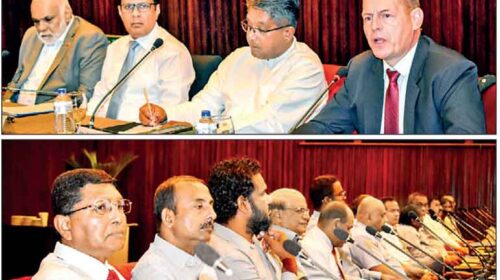 The Northern Province Governor’s Office, International Labour Organisation (ILO) and Ernst & Young (EY) collaborated to organise stakeholder meetings on generating investment-driven growth in the Northern Province.
The Northern Province Governor’s Office, International Labour Organisation (ILO) and Ernst & Young (EY) collaborated to organise stakeholder meetings on generating investment-driven growth in the Northern Province.
These meetings focused on the agriculture, animal husbandry, fisheries/aquaculture, apparel, food processing, and tourism sectors and were attended by private and public sector representatives relating to these sectors.
The Northern Province has extensive, but largely underutilised, resources that are very favourable for agriculture, animal husbandry, fisheries/aquaculture, and food processing activities and is a fertile ground for apparel and tourism. These have been identified as priority sectors for the Province’s development, along with the income generation, and employment for the people of the Province, while also contributing to the national economy. However, investment into the Province has been slow. The objective of the stakeholder meeting was to brief potential investors about the opportunities in these sectors and identify the issues and challenges which hinder investments.
Addressing the gathering, Northern Province Governor Jeevan Thiagarajah, set out the vision for the development of the Province. With ease of doing business being a key factor to be improved, the Governor spoke about the establishment of a single-entry window for investors to facilitate their entry into the Province. The Governor also spoke of the plans for development of “smart” agriculture and aquaculture, while underscoring the priority of achieving food security.
He noted that with the infusion of modern technology, productivity could be significantly increased, thereby generating surpluses with export potential. The Governor also highlighted that less than 5% of the marine resources of the province are currently being utilised and emphasised that this is an area with significant potential along with the development of inland fisheries. Addressing the issue of environmental sustainability, Governor Thiagarajah said that he intends to position the Northern Province as a “Green Province”, with the planting of trees, development of water catchment areas and green spaces.
ILO Chief Technical Advisor Thomas Kring elaborated on the background to the stakeholder meeting which is an initiative of ILO’s Local Empowerment through Economic Development and Reconciliation (LEED+) Project. Reiterating the importance of private sector investment in fuelling sustainable growth, Kring noted that the “ILO, through the LEED+ project has been able to facilitate successful private sector partnerships where the gains of growth are shared by both the company and local community. It’s a win-win proposition, and we have proven that it works.” He also spoke of plans to scale up and replicated the LEED+ approach at national level. Supported by the Australian Government Department of Foreign Affairs and Trade (DFAT) and the Government of Norway, the LEED+ project is part of the ILO’s global Jobs for Peace and Resilience programme.
During the event Ernst & Young Partner Arjuna Herath made a presentation on the key bottlenecks for private sector investments in the Northern Province. Speaking during his presentation, Herath said that the Northern Province has already seen the establishment of some successful ventures in the specified sectors, which demonstrates that the challenges could be addressed and overcome. He also went on to say, “we are optimistic that more investments could be facilitated into sectors that have the potential to succeed in the Northern Province”.
Participants at the meeting highlighted several issues faced by investors in the Northern Province, specifically issues relating to availability of land for commercial use, noting that the fragmentation of land is not conducive to large-scale agriculture which is required for export-oriented production. Other issues discussed related to unavailability of support services such as laboratory testing facilities, lack of skilled labour, poor water quality, and reliability of power supply.
These meetings are the first in a series of stakeholder meetings which will culminate in a national-level business forum bringing together key strategic partners and networks. The final outcome of the process is the development of a policy document and action plan for creating an enabling economic environment for growth through private sector partnerships and sustainable investments.
Lazard intensively evaluates State Banks asset quality
 The Lazard Sovereign Advisory Group, which serves as a financial adviser to Sri Lanka’s debt restructuring programme, has undertaken an intense examination into the best way to approach State Banks for the local debt restructuring programme, a senior government official told Finance Today.
The Lazard Sovereign Advisory Group, which serves as a financial adviser to Sri Lanka’s debt restructuring programme, has undertaken an intense examination into the best way to approach State Banks for the local debt restructuring programme, a senior government official told Finance Today.
According to official sources, Lazard is currently undertaking an in-depth study to determine how participation in domestic debt restructuring programme will affect the overall quality of assets held by each State Bank.
“In addition to the ongoing banking sector asset quality evaluation by global accounting and auditing firms KPMG and EY, Lazard is also independently evaluating the financial health of each Bank in accordance with IMF recommendations. On the basis of this study, a definite decision will be made regarding the restructuring of each State Bank’s investments in Treasury Bonds,” an official stated.
Analysts believe that to comply with the terms of Sri Lanka’s public debt restructuring programme, private creditors who have invested in International Sovereign bonds or ISBs are required to take a capital reduction or haircut of at least 30–40 per cent.
Accordingly, the relevant private bond holders believe that the necessary sacrifices should be made at the same level locally in order to obtain their approval.
“The contribution made locally is essential for the success of the restructure of public debt”, the official said.
However, the view that has been held by all parties, including the IMF is that the process of restructuring domestic debt should be carried out in such a way that there is no risk to the local banking system, which is already experiencing a great deal of stress.
To ensure that the domestic banking system is not put at risk, Lazard will conduct an in-depth analysis of the debt restructuring process, and has already engaged in extensive dialogue with nearly all of the major investors in the domestic treasury bond market to ascertain their viewpoints.
According to officers, the sovereign debt restructuring team has proposed to extend the maturities of domestic bond investments by ten years or issue new bonds with an attractive interest rate to encourage the respective parties to agree to this local debt restructuring process.
Heads of State Banks recently convened with Lazard to discuss the state banking sector’s position in the domestic debt restructuring procedure.
However, they have expressed reluctance to participate in the voluntary process of restructuring Treasury Bonds.
On 30 March 2023, the Governor of the Central Bank and Treasury Secretary presented a report to creditors on the status of debt restructuring, which will be accomplished in two ways: to provide liquidity relief and to ensure financial system stability.
By May 2023, domestic debt restructuring will be complete, and by September 2023, external debt restructuring will be complete.
Lazard intensively evaluates State Banks asset quality
CBSL Chief says Indian tourists to Sri Lanka can pay in INR
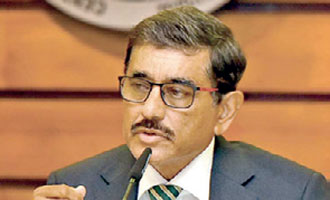 Central Bank Governor Dr. Nandalal Weerasinghe yesterday said that Indian tourists to Sri Lanka pay in their currency Indian Rupee (INR).
Central Bank Governor Dr. Nandalal Weerasinghe yesterday said that Indian tourists to Sri Lanka pay in their currency Indian Rupee (INR).
He reiterated that making INR a designated currency by the Central Bank of Sri Lanka enables not only trade settlement between the two countries in INR but also Indian tourists coming to Sri Lanka can use INR for transactions.
Dr. Weerasinghe also expressed support for the linking digital payment interfaces between the two countries during his keynote at the webinar on ‘Economic Scenario of Sri Lanka: Current Status and Way Ahead’, organised by the Federation of Indian Chambers of Commerce and Industry (FICCI).
During the first 23 days of April India topped the tourist inflow reflecting 17% or 13,839 whilst year to date Indians accounted for second highest 14% or 60,271 arrivals.
Remarks by the CBSL Governor come a day after Prime Minister Dinesh Gunawardena launched a Special Cover commemorating Sita Temple (Seetha Eliya) in Nuwara Eliya. The Temple is believed to mark the place of Ashok Vatika in the epic Ramayana and is a great hit with Indian tourists, as part of Ramayana circle which the Sri Lankan Government is seeking to promote. Tourists from India traditionally constitute the largest segment of international tourists coming to Sri Lanka.
Delivering a special address the Indian High Commissioner Gopal Baglay highlighted the areas of prospective economic cooperation between India and Sri Lanka. He particularly focused on connectivity, IT, renewable energy and tourism.
https://www.ft.lk/front-page/CBSL-Chief-says-Indian-tourists-to-Sri-Lanka-can-pay-in-INR/44-747699
EU and FAO launch 4 m Euro initiative to improve efficiency, sustainability of paddy farming
- Program targets 71,000 smallholder paddy farmers and 1,200 paddy seed farmers across 7 districts
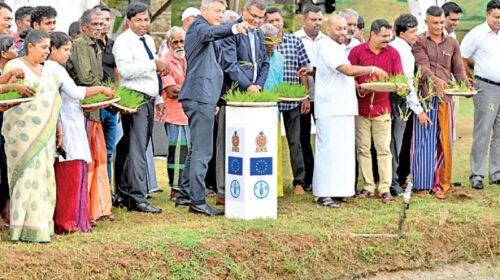 The Food and Agriculture Organisation of the United Nations (FAO) together with the European Union (EU) on Saturday launched a new program to strengthen food security in Sri Lanka by boosting the productivity and sustainability of the paddy cultivation sector.
The Food and Agriculture Organisation of the United Nations (FAO) together with the European Union (EU) on Saturday launched a new program to strengthen food security in Sri Lanka by boosting the productivity and sustainability of the paddy cultivation sector.
The 4 million Euro (approximately Rs. 1.5 billion) initiative funded by the EU was initiated at an event held at the Bataatha Agro Technology Park in Hambanthota.
Implemented by FAO with the support of the Ministry of Agriculture and the Mahaweli Authority, the program targets 71,000 smallholder paddy farmers and 1,200 paddy seed farmers across seven districts including Polonnaruwa, Badulla, Ampara, Matale, Puttalam, Kurunegala and Hambantota districts who were severely impacted by the recent economic crisis.
Speaking at the event, which saw the official start of the farmer field schools EU Ambassador to Sri Lanka Denis Chaibi said: “With this new action, we want to help farmers not only to grow more, but most importantly to grow better so that they can increase their production and incomes, but also protect the environment around them. We hope that together with FAO and the Government of Sri Lanka we can gradually promote a transition towards greener and climate-smart agriculture. Transition that produces sufficient amount of food, while protecting the planet and its people.”
The recipient farmers will receive material and technical support to transition from traditional cultivation methods into climate-smart, modern farming techniques. The eligible paddy farmers cultivating up to 0.5 ha of land will receive 50 kg urea fertiliser and necessary tools to enhance efficiency of fertiliser use. 3,820 tonnes of urea fertiliser procured by the program were already handed over to the Ministry of Agriculture to be distributed among selected smallholder paddy farmers and paddy seed farmers.
Paddy seed farmers supported through the program will also receive locally produced, high quality paddy seeds alongside material support such as parachute trays to improve efficiency and profitability of cultivation methods. Furthermore, all recipients will be enrolled in farmer-field schools to improve knowledge sharing on modern techniques such as the Integrated Plant Nutrient Management (IPNM) strategy to boost efficiency and reduce dependency on the use of chemical fertiliser.
Agriculture Minister Mahinda Amaraweera expressed his appreciation to the FAO and the EU for the implementation of a holistic program aimed at improving the sustainability of Sri Lanka’s paddy sector. “Our paddy farmers underwent significant challenges over the past few years. This support we received from FAO and the EU is a testament to their perseverance during the tough times, for which we are thankful. These inputs and knowledge sharing will no doubt elevate the quality of rice production and the livelihoods of Sri Lankan paddy farmers.”
FAO Representative in Sri Lanka Vimlendra Sharan said: “This program marks an important milestone in FAO’s work in Sri Lanka over the past year – the shift back into development from the emergency response. We are grateful for the support we have received from the EU to implement this program, which aims to address some of the longstanding concerns in the local paddy sector, to reach better production, leading to better nutrition, a better environment and improve food security for all Sri Lankans.”
EU and FAO said they will continue to work closely with the Government of Sri Lanka and key partners to support the recovery of the agriculture sector while building resilience and sustainability into the sector to increase yield and profit for smallholder farmers as the sector recovers.
Japan, UNDP launch fresh programs to boost socio-economic recovery
- $ 3.8 m initiative via home-based agriculture and energy security interventions
- 58,000 women and youth will directly benefit from these projects, while indirectly impacting over 132,000 vulnerable community members from the North-Central, North-Western and Eastern provinces
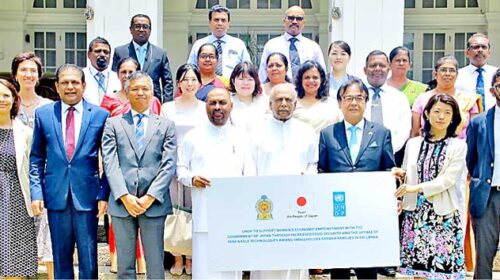 The Government of Japan and the United Nations Development Program (UNDP) yesterday launched a new initiative to strengthen socio-economic recovery via home-based agriculture and energy security measures.
The Government of Japan and the United Nations Development Program (UNDP) yesterday launched a new initiative to strengthen socio-economic recovery via home-based agriculture and energy security measures.
The $ 3.8 million (Rs. 1.17 billion) initiative supports improvement of women’s economic wellbeing for smallholder farmer families in Sri Lanka. It was launched in the presence of Prime Minister Dinesh Gunawardena, Japanese Ambassador Mizukoshi Hideaki, UNDP Resident Representative Azusa Kubota, JICA Chief Representative Tetsuya Yamada, Agriculture Minister Mahinda Amaraweera, Power and Energy Minister Kanchana Wijesekera, senior government officials and development partners.
The ongoing socio-economic crisis has had serious impacts on the agricultural sector in Sri Lanka. The rising energy costs and evolving climate change impacts have further exacerbated due to the situation. The initiative launched yesterday aims at addressing these issues.
It will support vulnerable smallholder farming families in the dry zone districts, namely North-Central, North-Western and Eastern provinces, with a focus on women’s economic empowerment and adoption of green agricultural technologies.
Funded by the Japanese Supplementary Budget (JSB) and working together with the Government of Sri Lanka and relevant stakeholders, the intervention aims to achieve its objectives through two projects; the first focusing on diversifying livelihoods and introducing entrepreneurship programs, targeting women-led MSMEs. The second aims to strengthen energy and food security, through the revival of the rural agricultural economy by providing access to innovative markets, value and supply chain improvements along with the adoption of modern, green agricultural technologies which will increase productivity and efficiency.
A total of 58,000 women and youth will directly benefit from these projects, while indirectly impacting over 132,000 vulnerable community members from the North-Central, North-Western and Eastern provinces of Sri Lanka.
Prime Minister Gunawardena said: “Government of Sri Lanka appreciates the continuous support extended by the Government of Japan and the United Nations Development Program towards the country’s efforts to recover from the socioeconomic crisis. We believe this is a significant step towards creating a food and energy secure Sri Lanka, both vital sectors to the fabric of the country’s economy.”
Highlighting Japan’s commitment to the people of Sri Lanka in crisis recovery efforts, Ambassador Mizukoshi said: “Japan has been working together with the Government of Sri Lanka and relevant UN agencies for economic and social empowerment of women in Sri Lanka, including the formulation of National Action Plan for Women, Peace and Security. These new projects will provide practical means to uplift the lives of vulnerable communities. Especially, we recognise the special needs of women-headed households in conflict-affected areas. It is a great opportunity to create positive synergy with UNDP’s expertise and JICA’s technical assistance for supporting livelihood and vulnerable communities.”
UNDP Resident Representative Kubota said: “These are times when multiple-solutions through multiple-partnerships are required because we are faced with compounding and complex challenges. I am grateful for the commitments demonstrated by a wide range of actors present today. We must join hands to address the needs of the most vulnerable and affected segments of the society – particularly women-headed households. And investing in them will have visible, long-term benefits for the families and communities.”
Sri Lanka expects to tap tourism niche, trade with India ferry service
ECONOMYNEXT – Sri Lanka is expecting widen tourism and trade links with the start of a ferry service between the two countries from April 29, which is cheaper than air travel and has a higher baggage allowance officials said.
Sri Lanka’s Ports Ministry has started to build a passenger terminal in Kankasanthurai (KKS) port in the northern Jaffna peninsula with the help of the Sri Lanka Navy at a cost of 144 million rupees to support the ferry service.
The ferry service will operate between KKS and Karaikal Port in Pondicherry, India.
“There are private ferry owners who operate the services, and at the moment, there only three ferry operators,” Viraj Abeysinghe, the Media Secretary of the Ministry of Ports, Shipping, and Aviation, told Economy Next.
“However, we, as a ministry, provide infrastructure facilities only. A ferry will carry 150 passengers at a time and will take around a 4-hour journey from Karaikal Port to KKS Port.”
The charges will start from 50 US dollars per passenger for a one-way trip, which is roughly around 16,075 rupees, and a baggage allowance of 100 kilos will be permitted.
The charges will start from 50 US dollars per passenger for a one-way trip, which is roughly around 16,075 rupees, and a baggage allowance of 100 kilos will be permitted.
“The ferry service will cater to a different sector of the market because it is going to be cheaper than traveling by air,” Priyantha Fernando, Chairman of Sri Lanka Tourism Development Authority, told Economy Next.
“So we are opening up to a different segment of the market, and it will definitely make a positive contribution.
“This will definitely help tourism, and it will also help commercial activity because the baggage allowance is much greater, and there will be trade taking place between India and Sri Lanka.”
Entrepreneurs from Sri Lanka and India are encouraged to join this opportunity.
The service will also open up the way for export and imports for cheaper prices, which can indirectly benefit the country, he said. (Colombo/Apr21/2023)
Sri Lanka expects to tap tourism niche, trade with India ferry service
IMF facility only the beginning of a tough journey: Dr. Roshan Perera
- Govt. needs to undertake several structural reforms within the year
- Sri Lanka must also focus on structural reforms to unlock growth
- Limited capacity and political space may affect speed of reforms
- SL governments in particular have very short-term policy orientation
- CB independence strengthens House oversight over public finances
- With independence comes need for greater transparency, accountability
- More independent central banks deliver and maintain lower inflation
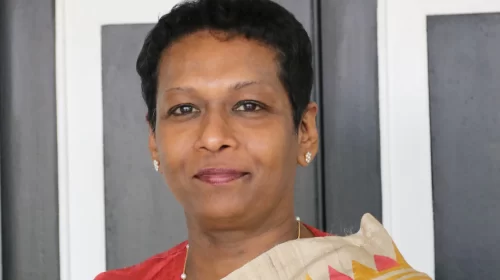 The securing of the International Monetary Fund (IMF) facility is only the beginning of a long and tough journey to moving the country towards a more sustainable growth path, asserted public policy specialist and Advocata Institute Senior Research Fellow Dr. Roshan Perera, in an interview with The Sunday Morning.
The securing of the International Monetary Fund (IMF) facility is only the beginning of a long and tough journey to moving the country towards a more sustainable growth path, asserted public policy specialist and Advocata Institute Senior Research Fellow Dr. Roshan Perera, in an interview with The Sunday Morning.
“The focus of the IMF programme in the near term is on macroeconomic stability and debt sustainability. There are five main pillars of this programme and monitoring the progress of these objectives is based on strict quantitative targets. Apart from this, there are several structural reforms the Government needs to undertake within the year to ensure the programme stays on course,” she pointed out.
Furthermore, this programme, unlike the last 16 programmes, entails a debt restructuring exercise to ensure Sri Lanka’s debt is brought to a sustainable level, Dr. Perera noted, adding that this was a more onerous task as it required the cooperation of many stakeholders – both domestic and foreign.
“Achieving all this requires the Government to work simultaneously on multiple fronts. Limited capacity and political space may affect the speed at which reforms are undertaken. But the bottom line is unless these macroeconomic and structural reforms are carried out, Sri Lanka will likely be going back to the IMF for the 18th time,” she warned.
Commenting on the proposed Central Bank Act, Dr. Perera, who is a former Director of the Central Bank of Sri Lanka (CBSL), said: “I think we need to take a step back and understand the rationale for Central Bank independence. Unless the macroeconomic and structural reforms are pushed through, Sri Lanka will find itself in a similar situation in a few years.”
Following are excerpts of the interview:
Now that the IMF facility has been secured, what are the next steps the Government should take to ensure Sri Lanka’s economic recovery?
This is only the beginning of a long and tough journey to moving the country towards a more sustainable growth path.
The focus of the IMF programme in the near term is on macroeconomic stability and debt sustainability. There are five main pillars of this programme: advancing fiscal consolidation and strengthening institutions, restoring price stability and rebuilding external reserves buffers, public debt sustainability, ensuring financial stability, and reducing corruption vulnerabilities.
Monitoring the progress of these objectives is based on strict quantitative targets (performance criteria) on the Government’s primary fiscal balance, credit to the Government, and the net official international reserves, as well as indicative targets on Government tax revenue, social spending, costing of non-commercial obligations for fuel and electricity, and Treasury guarantees.
Apart from this, there are several structural reforms the Government needs to undertake within the year to ensure the programme stays on course.
To be completed by Q2 2023:
- Parliamentary approval of welfare benefit payment scheme (enhanced social safety nets)
- Cabinet approval of a comprehensive strategy to restructure the balance sheets of key State-Owned Enterprises (SOEs)
- Parliamentary approval of new anti-corruption legislation
- Parliamentary approval of the new Central Banking Act
To be completed by Q3 and Q4 2023:
- Revamping the VAT system by removing almost all product specific VAT exemptions
- Submitting the Public Financial Management (PFM) Law to Parliament
- Parliamentary approval for the full revision of the Banking Act
But in addition, this programme (unlike the last 16 programmes) entails a debt restructuring exercise to ensure Sri Lanka’s debt is brought to a sustainable level. This is a more onerous task as it requires the cooperation of many stakeholders – both domestic and foreign.
While the IMF programme at this point focuses on macroeconomic stabilisation and debt sustainability, the country needs to focus in parallel on undertaking structural reforms to unlock growth. This includes improving the business environment and boosting productivity and fostering competition by removing bureaucratic barriers, trade reform, labour market reform, and land reform, among other structural reforms.
Achieving all this requires the Government to work simultaneously on multiple fronts. Limited capacity and political space may affect the speed at which reforms are undertaken. But the bottom line is unless these macroeconomic and structural reforms are carried out, Sri Lanka will likely be going back to the IMF for the 18th time.
Is the Government’s approach to the debt restructuring plan feasible in terms of meeting the April deadline set by the IMF?
The objectives of debt restructuring are to put Sri Lanka’s debt on a sustainable path and to restore market access for the country. The IMF programme hopes to achieve these overall objectives by:
- Reducing public debt below 95% of GDP by 2032 (public debt was 128.1% at end 2022)
- Reducing the Government’s annual Gross Financing Needs (GFN) to an average of 13% between 2027-2032 (the GFN of the Government was 34.5% in 2022)
- Reducing the Government’s annual debt servicing in foreign currency to a maximum of 4.5% of GDP every year in 2027-’32 (the debt servicing in foreign currency was 9.6% of GDP in 2022).
In order to achieve these targets, the Government needs to engage both domestic and external creditors to modify the terms of the existing debt contracts in terms of coupon adjustments, maturity extensions, and haircuts on the principal.
The Government is expected to announce the coverage and parameters of both the external and domestic debt operations by end April 2023 and complete the Domestic Debt Optimisation (DDO) exercise by May 2023 and the external debt restructuring by September 2023.
This appears to be an ambitious timeline given the experience of other countries that have undertaken a similar exercise. For instance, Ghana took around two months to come to an agreement with 85% of its domestic creditors. This excluded pension funds.
In the case of banks, although it was a ‘voluntary’ exercise, they were ‘incentivised’ to participate in the Domestic Debt Exchange (DDE) by increasing the risk weight to 100% on old bonds as opposed to 0% on the newly-issued bonds and excluding non-participating banks from the Ghana Financial Stability Fund, which was set up to provide liquidity support.
In the case of Sri Lanka, the authorities announced that in the case of Treasury bills, of the Rs. 4.1 trillion outstanding, only Rs. 2.6 trillion ($ 7.1 billion) held by the Central Bank would be restructured. This accounts for more than 50% of the assets of the Central Bank, which will have implications for the liquidity and solvency of the Central Bank.
Of the total outstanding Treasury bonds of Rs. 8.7 trillion ($ 24 billion), superannuation funds hold around 43%. If they are excluded from DDO, the burden of restructuring will fall on banks that hold around 44.5% (Rs. 3.9 trillion) of the outstanding stock of Treasury bonds.
This will have implications for financial stability given that banks have already been affected by multiple shocks and the continuing contraction of the economy. This may require regulatory forbearance from the regulator on capital requirements, but is also an opportunity for consolidation within the financial sector.
Hence, the extent of the domestic debt restructuring would depend on the extent of recapitalisation it would entail as well as the impact on financial stability [i]. Who bears a greater share of the restructuring cost will depend on the economic and financial costs of the different options.
Will the proposed Central Bank Act yield the expected results? Shouldn’t the focus be on preventing political interference over ensuring independence?
I think we need to take a step back and understand the rationale for Central Bank independence.
At the beginning I said that unless macroeconomic and structural reforms are pushed through, Sri Lanka will find itself in a similar situation in a few years. Ensuring these reforms are undertaken requires political commitment but also an independent bureaucracy that is able to make the right decisions and carry them out. This requires a stronger institutional framework for policymaking.
Governments in general and in Sri Lanka in particular have very short-term policy orientation – they operate from one election cycle to the next. These policies may make the public happy in the short run, but they fail to deliver the long-term goals for the country. Adopting a rule-based policy framework as opposed to a discretionary policy framework is able to overcome this time inconsistency problem of policymaking.
In the case of a central bank, independence insulates monetary policy from short-term political considerations, which otherwise leads to boom-bust cycles and time-inconsistent policies.
Central Bank independence refers to instrument independence, not goal independence. That is, while the goal of monetary policy (inflation target) is set together with the Government, the conduct of monetary policy should be free from Government control. In other words, the Central Bank should be able to use its instrument (interest rate) to achieve the goal that has been set by the Government (inflation target).
However, since the Central Bank of Sri Lanka also undertakes agency functions for the Government such as debt management and managing the Employees’ Provident Fund (the largest provident fund in the country), there are likely to be conflicts with the primary objective of domestic price stability. Hence these functions need to be taken out of the CBSL if it is to focus on its primary mandate.
One of the main obstacles to the Central Bank achieving its primary objective has been the monetisation of the Government’s deficit through the purchases of Government securities. In the proposed Central Bank Act, purchase of Government securities from the primary market is prohibited (Section 86). This is an essential element for the independence of the CBSL.
Monetising the deficit allows governments free rein over the printing press without having to go to Parliament for approval. Giving the Central Bank independence in fact strengthens parliamentary oversight over public finances rather than diminishing it.
However, with independence comes the need for greater transparency and accountability. “…If you’re independent, it’s vital that people can understand what you are doing. If you are independent and you tell the general public ‘It’s none of your business,’ independence will be taken away from you, sooner or later” – former Governor of Swedish Riksbank Stefan Ingves.
Greater independence requires greater parliamentary oversight. Many countries require the governor of the central bank to explain to parliament or a parliamentary committee the rationale behind every monetary policy decision. It also entails better communication with the general public on the policies undertaken.
One of the main sources of independence is through the appointment of the governor and the members of the boards. Excluding the secretary of Finance from the Monetary Policy Board was to ensure monetary policy decisions were made independent of the Government. However, in the proposed bill, the minister in charge of Finance is responsible for a majority of appointments to the boards. This could dilute the independence of the institution.
The consequences of not achieving the set targets are not specified in the proposed bill other than requiring the Central Bank to explain to the minister in charge of Finance, and in some cases Parliament, the reasons for deviations from the target.
This was a major failure of the Fiscal Management Responsibility Act. Despite continuous breaches of fiscal targets, no one was held responsible because there was no accountability mechanism built into the act.
Finally, the CBSL cannot achieve its objectives and overall macroeconomic stability will not be possible without fiscal discipline. Sri Lanka enacted a Fiscal Management Responsibility Act No.3 of 2003 (amended in 2013, 2016, 2021) with several fiscal rules, but enforcement was weak. Fiscal rules need to be integrated into government budgets and medium-term fiscal frameworks [ii]. Some countries have included correction mechanisms which specify a path to return to the fiscal rule following a deviation. It also requires better oversight by Parliament.
The proposed Budget Office in Parliament can play the role of an independent nonpartisan entity that can provide fiscal oversight by assessing fiscal plans, evaluating budget forecasts, costing Government budget proposals, and monitoring adherence to fiscal rules. But this entity must be given operational independence, have the technical capacity, and have access to timely information to carry out an independent analysis.
For a rules-based framework to work, it requires political commitment. But the overall benefits to the citizens of the country in terms of improving overall welfare are considerable.
There is empirical evidence to support that more independent central banks deliver and maintain lower inflation compared to less independent central banks. Countries with less independent central banks tend to run higher budget deficits since monetary financing is easier politically compared to raising taxes and hence end up with higher public debt and economic crises.
Footnotes
[i] Grigorian, David A., 2023. ‘Restructuring Domestic Sovereign Debt: An Analytical Illustration,’ IMF Working Paper 23/24, Washington, DC.
[ii] Study in 2021, ‘Fiscal Rules and Fiscal Councils Recent Trends and Performance During the Covid-19 Pandemic’ prepared by Hamid R. Davoodi, Alexandra Fotiou, Paul Elger, Daniel Garcia-Macia, Xuehui Han, Andresa Lagerborg, W. Raphael Lam, and Paulo Medas (IMF Working Paper WP/22/11)
https://lankafocus.org/wp-admin/post.php?post=1887&action=elementor